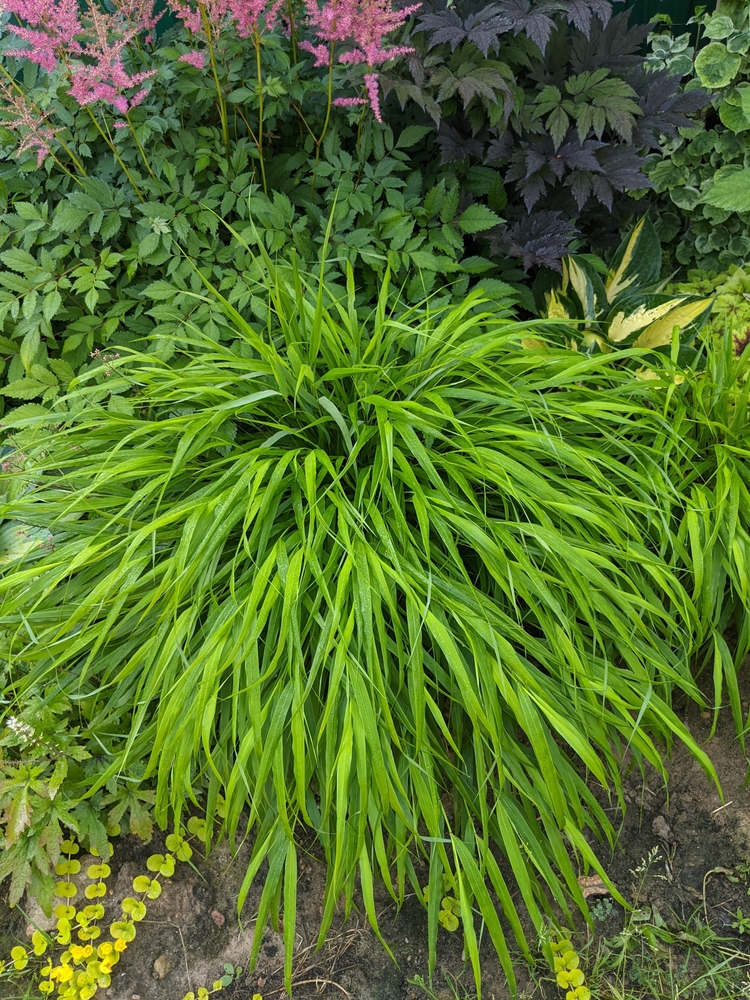Description
Hakonechloa is a genus of ornamental grasses that are native to Japan and Korea. They are popular for their low-growing, clumping habit and their attractive foliage. Here are some horticultural notes on the genus Hakonechloa:
Growing conditions: Hakonechloa prefers moist, well-drained soil and partial shade. It can tolerate full sun in cooler climates, but in hot, dry areas it may require more shade and frequent watering.
Watering: Keep the soil consistently moist but not waterlogged, especially during hot, dry weather. Mulching around the plants can help retain soil moisture.
Fertilizing: Fertilize Hakonechloa in the spring with a slow-release fertilizer or compost.
Pruning: Hakonechloa does not require much pruning, but you can remove any dead or damaged leaves as needed.
Propagation: Hakonechloa can be propagated by division in the spring or fall. Simply dig up the clump and separate it into smaller sections, replanting each section in a new location.
Pests and diseases: Hakonechloa is generally pest and disease-free, but it may be susceptible to rust, particularly in humid conditions. Avoid overhead watering and remove any infected leaves.
Uses: Hakonechloa is commonly used as a groundcover or edging plant, as well as in rock gardens or container plantings. It pairs well with other shade-loving plants such as ferns and hostas.


